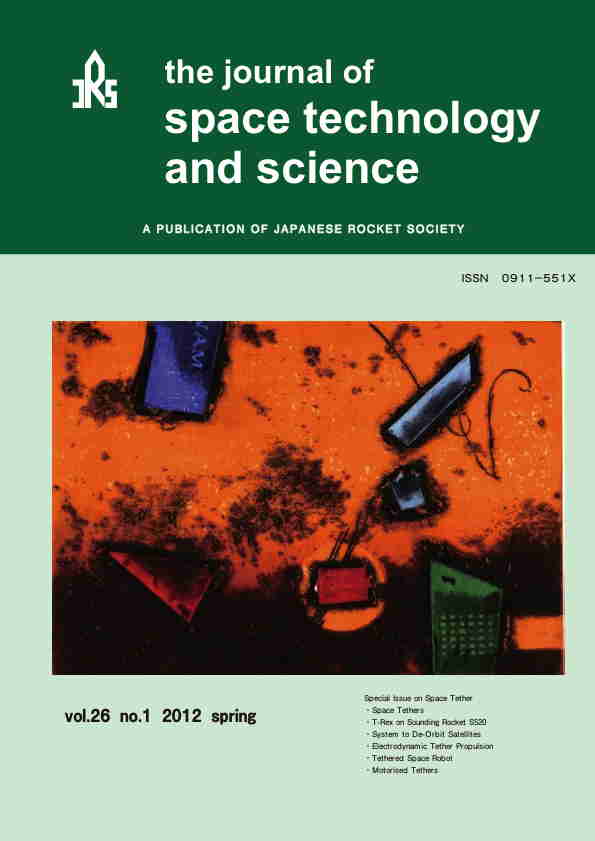All issues

Volume 21 (2005)
- Issue 2 Pages 2_1-
- Issue 1 Pages 1_1-
Volume 21, Issue 2
Special Issue on Space Agriculture
Displaying 1-4 of 4 articles from this issue
- |<
- <
- 1
- >
- >|
Articles
-
Masamichi YAMASHITA, Yoji ISHIKAWA, Makoto NAGATOMO, Tairo OSHIMA, Hid ...2005 Volume 21 Issue 2 Pages 2_1-2_10
Published: 2005
Released on J-STAGE: August 18, 2013
JOURNAL FREE ACCESSConcept of space agriculture is discussed for habitation on Mars. Space agriculture enables human to live and survive comfortably with biological and ecological functions. Water and gas are revitalized by photosynthetic process of plants. Hyper-thermophilic aerobic composting bacteria drive recycling loop of metabolic waste of human and inedible biomass to cultivate plants. Trees and insects play important role in space agriculture as suppliers of additional oxygen, wooden materials, and animal protein as food sources. Marine macro-algae provide sodium and potassium which might become deficient in space agriculture. Space agriculture does not necessarily aim to achieve 100% closure of materials recycle, but utilizes Martian resources to supplement loss in the loop and thus makes the scale of the system enlarge without importing any materials from Earth. Conceptual design and trade study on candidate subsystems are reported. Development plan to achieve such space agriculture in Mars is proposed. First, Earth-based study and experimental work should solve some essential questions and then simulation and verification should be thoroughly accomplished on orbiting platforms and at Moon base.View full abstractDownload PDF (569K) -
Makoto NAGATOMO2005 Volume 21 Issue 2 Pages 2_11-2_26
Published: 2005
Released on J-STAGE: August 18, 2013
JOURNAL FREE ACCESSTo investigate the possibility of synthesizing an extraterrestrial ecological system, which hosts human beings and forests as its member, effects of environmental pressure on growth of trees were experimentally studied. Two young Hinoki cypress trees were planted in the air under pressure of one tenth of terrestrial atmosphere for six months and compared with other two trees for control. The test samples grew for more than four months but deteriorated at the end of the experiment and died months after retrieved to the normal atmosphere. Another short-term experiment conducted separately confirmed that one of the trees could photosynthesize under the similar subatmospheric air with carbon dioxide enriched.View full abstractDownload PDF (1149K) -
Naomi KATAYAMA, Masamichi YAMASHITA, Hidenori WADA, Jun MITSUHASHI2005 Volume 21 Issue 2 Pages 2_27-2_38
Published: 2005
Released on J-STAGE: August 18, 2013
JOURNAL FREE ACCESSIn order to develop a basic design for an agricultural system that could support life on Mars, an appropriate space diet for humans is first required. We conducted a nutritional evaluation on a candidate menu. A combination of rice, soybean, sweet potato, green-yellow vegetable (represented by Komatsuna), silkworm pupa, and loach was found to be an appropriate diet that fulfills human nutritional requirements.View full abstractDownload PDF (694K) -
Yuji NAKAMURA2005 Volume 21 Issue 2 Pages 2_39-2_48
Published: 2005
Released on J-STAGE: August 18, 2013
JOURNAL FREE ACCESSMechanical structure and fire safety are discussed on pressurized environment for habitation on Mars. Trade-off studies were conducted between a rigid module (with concrete) and dome structure (with reinforced-membrane) to perform conceptual design of the man-made structure in space. In any case, it is preferable to choose lower pressure in the structure. Evaluation of safety in fire in lower pressure environment was made based on the previous test of irradiated ignition of thin cellulosic sheet under reduced ambient gas pressure. It was confirmed that 50 kPa of total internal pressure and 10 kPa of oxygen partial pressure, which are required for supporting biological lives, could be acceptable for both structures and from fire safety point of view. Because of the need of higher fire safety regulation, another fire safety strategy must be applied when human activity in the enclosure is considered since nearly double oxygen amount (-20 kPa) is required then. Fire safety in lower pressure conditions and different gravitational environment is a key issue for future space activity and development.View full abstractDownload PDF (807K)
- |<
- <
- 1
- >
- >|